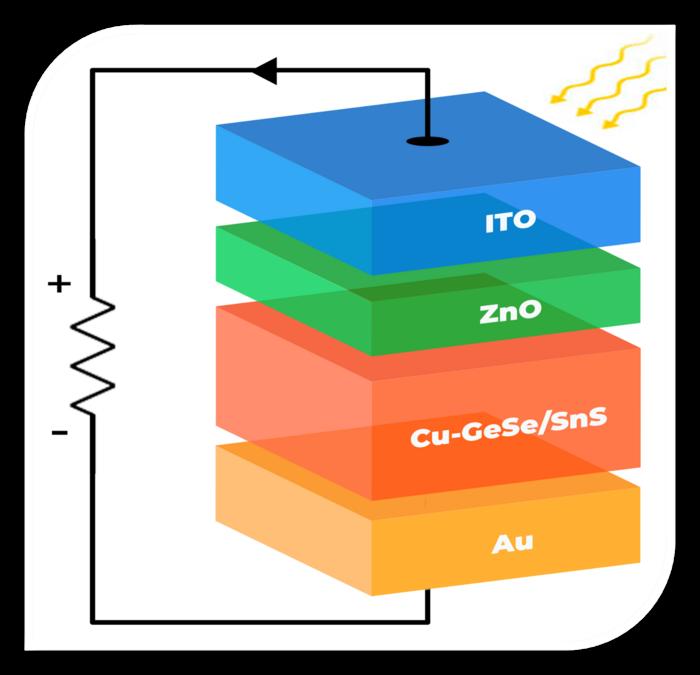Researchers at Lehigh University in the United States developed a new thin-film solar cell absorber material that reportedly features an average photovoltaic absorption of 80% and an external quantum efficiency (EQE) of 190%.
Th EQE is the ratio of the number of electrons collected by the solar cell to the number of photons that hit it. It defines how well a solar cell converts photons into electrical current. “In traditional solar cells, the maximum EQE is 100%, representing the generation and collection of one electron for each photon absorbed from sunlight,” the research’s lead author Chinedu Ekuma said in a statement.
In the paper “Chemically tuned intermediate band states in atomically thin CuxGeSe/SnS quantum material for photovoltaic applications,” published in ScienceAdvance, the academics explained that the new quantum material may be an ideal match for intermediate band solar cells (IBSCs).
These devices are believed to have the potential to exceed the Shockley-Queisser limit – the maximum theoretical efficiency that a solar cell with a single p-n junction can reach. It is calculated by examining the amount of electrical energy that is extracted per incident photon.
“The material’s efficiency leap is attributable largely to its distinctive ‘intermediate band states,’ specific energy levels that are positioned within the material’s electronic structure in a way that makes them ideal for solar energy conversion,” the scientists explained. “These states have energy levels within the optimal subband gaps—energy ranges where the material can efficiently absorb sunlight and produce charge carriers.”
The new material is a 2D two-dimensional Van der Waals (vdW) material, which means it features a crystalline planar configuration held together by ionic bonds. It consists of an heterostructure combining germanium (Ge), selenium (Se), and tin sulfide (Sns) with atoms of zerovalent copper (Cu) being inserted between the material’s layers.
The CuxGeSe/SnS material features an intermediate energy bandgap ranging from 0.78 eV and 1.26 eV. With it, the group designed and modeled a thin-film solar cell with the proposed material as the active layer.
The device was assumed to be based on an indium tin oxide (ITO) substrate, an electron transport layer (ETL) based on zinc oxide (ZnO), CuxGeSe/SnS absorber, and a gold (Au) metal contact. “In our design, atomically thin GeSe and SnS are vertically stacked, facilitating the easy integration of the hybrid structures through van der Waals interactions,” the research team specified.
The simulation showed that the cell EQE may span from 110% to 190%. The researchers also found that by gauging the absorber’s thickness the cell optical activity increases in wavelengths ranging from 600 to 1200 nm.
“The rapid response and enhanced efficiency in Cu-intercalated samples, strongly indicate the potential of Cu-intercalated GeSe/SnS as a quantum material for use in advanced photovoltaic applications, offering an avenues for efficiency improvements in solar energy conversion,” they concluded.
Looking forward, the research group said new research is required to identify a practical way to embed the novel material in real solar cells. However, they also noted that the experimental techniques used to create these materials are already “highly advanced.”
This content is protected by copyright and may not be reused. If you want to cooperate with us and would like to reuse some of our content, please contact: editors@pv-magazine.com.









By submitting this form you agree to pv magazine using your data for the purposes of publishing your comment.
Your personal data will only be disclosed or otherwise transmitted to third parties for the purposes of spam filtering or if this is necessary for technical maintenance of the website. Any other transfer to third parties will not take place unless this is justified on the basis of applicable data protection regulations or if pv magazine is legally obliged to do so.
You may revoke this consent at any time with effect for the future, in which case your personal data will be deleted immediately. Otherwise, your data will be deleted if pv magazine has processed your request or the purpose of data storage is fulfilled.
Further information on data privacy can be found in our Data Protection Policy.